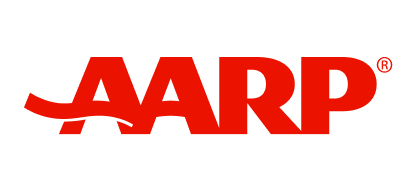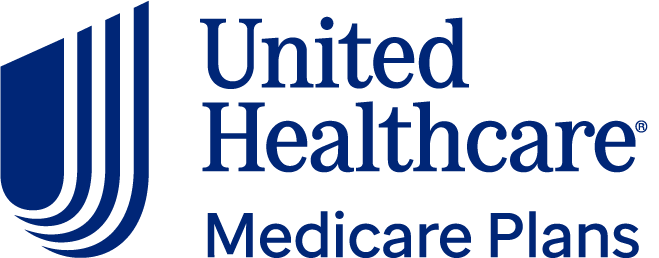The bottom line: AARP Medicare Advantage plans are insured by UnitedHealthcare and offer widely available $0 plans, but star ratings for UHC are just average, and competitors might offer a better customer experience. Jump to: Full Review

AARP Medicare Advantage pros and cons
Pros
- Backed by a solid company: UnitedHealthcare, which insures AARP Medicare Advantage plans, offers a large Medicare Advantage network with nearly 1 million network care providers.
- Low cost: Among AARP Medicare Advantage plans, 62% offer a $0 premium. $0-premium AARP plans are available in 43 states.
Cons
- Customer experience: UnitedHealthcare scored below average on customer experience surveys in 6 out of 10 major Medicare markets in J.D. Power’s latest study.
Compare against other providers

🔍 UnitedHealthcare Medicare Advantage



» More options in our roundup of the best Medicare Advantage plans
Compare against other providers

🔍 UnitedHealthcare Medicare Advantage

» More options in our roundup of the best Medicare Advantage plans
Our full review
Why trust NerdWallet
45+ Medicare companies and brands analyzed by our team of experts.
30+ years of combined experience covering Medicare and personal finance.
Governed by NerdWallet's strict guidelines for editorial integrity.
NerdWallet’s Medicare content, including articles, reviews and recommendations, is produced by a team of writers and editors who specialize in Medicare. Their work has appeared in The Associated Press, Washington Post, Nasdaq, MSN, MarketWatch, Yahoo! Finance and other national and regional media outlets. They have been cited in publications including Healthline, and appeared on NerdWallet's "Smart Money" podcast.
AARP Medicare Advantage star ratings
Average star rating, weighted by enrollment: 4.1
UnitedHealthcare Medicare Advantage plans, which include AARP plans, are rated at about the industry average, receiving an average rating of 4.1 stars out of 5 from the Centers for Medicare & Medicaid Services (CMS) for 2026, weighted by enrollment. For comparison, the average weighted star rating for plans from all providers is 3.98.
CMS maintains its own database of star ratings on every Medicare Advantage and Medicare prescription drug plan, ranging from best (5 stars) to worst (1 star). The agency bases these ratings on plans’ quality of care and measurements of customer satisfaction, and ratings may change from year to year.
You can find a plan’s rating with the Medicare plan finding tool.
How much does AARP Medicare Advantage cost?
About 62% of AARP Medicare Advantage plans offer $0 premiums. For plans with a premium, the average monthly cost for plans with prescription drug coverage is $59.87. You'll also be responsible for paying your Medicare Part B premium, which is $185 per month in 2025 ($202.90 in 2026).
(Most people pay this standard Part B amount, but if your income is above a certain threshold, you’ll pay the income-related monthly adjustment amount (IRMAA). Some Medicare Advantage plans will cover part or all of your Part B premium.)
Requirements for copays, coinsurance and deductibles vary depending on your plan, location and the services you use. Other out-of-pocket costs to consider include:
Whether the plan covers any part of your monthly Medicare Part B premium.
The plan’s yearly deductibles and any other deductibles, such as a drug deductible.
Copayments and/or coinsurance for each visit or service. For instance, there may be a $10 copay for seeing your primary doctor and a $45 copay for seeing a specialist.
The plan’s in-network and out-of-network out-of-pocket maximums.
Whether your medical providers are in-network or out-of-network or how often you may go out of network for care.
Whether you require extra benefits and whether the plan charges for them.
Here are examples of AARP Medicare Advantage costs for plans in a mid-range city:
UHC/AARP Medicare Advantage plan | Pricing |
|---|---|
AARP Medicare Advantage Essentials from UHC KC-4 (PPO) | Monthly premium: $0. Deductible: None. Out-of-pocket max: $4,900 in-network. Copays:
Dental allowance: No coverage. |
AARP Medicare Advantage Patriot No Rx KS-MA01 (PPO) | Monthly premium: $0. Deductible: None. Out-of-pocket max: $6,700 in-network. Copays:
Dental allowance: $1,500. |
AARP Medicare Advantage Essentials from UHC KC-6 (HMO-POS) | Monthly premium: $0. Deductible: None. Out-of-pocket max: $3,900 in-network. Copays:
Dental allowance: Preventive services only. |
Selected plans are available in ZIP code 66013. *Inpatient hospital copay is per day for days 1-6. **Inpatient hospital copay is per day for days 1-5. | |
| |
To get a sense of costs, use Medicare’s website to compare information among available plans in your area. You can select by insurance carrier to see only UnitedHealthcare plans or compare across carriers.
AARP Medicare Advantage plan types
AARP offers Medicare Advantage prescription drug plans and Medicare Advantage plans without prescription drug coverage. Available plan types include:
- HMO-POS plans
Health maintenance organization (HMO) point-of-service plans are HMO plans that allow members to get some out-of-network services, but you’ll pay more for those services.
- PPO plans
Preferred provider organization (PPO) plans provide the most freedom, allowing you to see any provider that accepts the insurance. You may not need to choose a primary doctor, and you don’t need referrals to see specialists. You can seek out-of-network care, although it may cost more than seeing an in-network doctor.
AARP Medicare service area
AARP Medicare Advantage plans are available in 45 states and Washington, D.C., and more than 4.4 million people are enrolled in AARP plans.
Overall, UnitedHealthcare is the largest for-profit Medicare Advantage provider. More than 9.8 million Medicare beneficiaries are enrolled in a UnitedHealthcare Medicare Advantage plan, and the company added 404,000 members for the 2025 plan year.
About AARP
AARP is a nonprofit interest group and advocacy organization. It advocates for local, state and national policies on behalf of older Americans. AARP members can access benefits through the organization, including discounts on products and services.
Read the NerdWallet reviews of these other AARP/UnitedHealthcare Medicare offerings:
Read the NerdWallet reviews of these other AARP insurance products:
AARP Medicare Advantage customer service
AARP Medicare Advantage members can contact their plan’s customer service (managed by UnitedHealthcare) in the following ways:
Call the number on your member ID card during the hours of operation listed.
Chat with a customer service agent online.
Call the number that loads on your AARP Medicare Plans page (based on location) from 8 a.m. to 8 p.m. in your time zone, 7 days a week.
Compare Medicare Advantage providers
Get more information below about some of the major Medicare Supplement Insurance companies. These insurers offer Medigap plans in most states, but specifics may vary depending on your location.
Find the right Medicare Advantage plan
It’s important to do your research before selecting a Medicare Advantage plan for yourself. Here are some questions to consider asking:
What are the plan’s costs? Do you understand what the plan’s premium, deductibles, copays and/or coinsurance will be? Can you afford them?
Is your doctor in-network? If you have a preferred medical provider or providers, make sure they participate in the plan’s network.
Are your prescriptions covered? If you’re on medication, it’s crucial to understand how the plan covers it. What tier are your prescription drugs on, and are there any coverage rules that apply to them?
Is there dental coverage? Does the plan offer routine coverage for vision, dental and hearing needs?
Are there extras? Does the plan offer any extra benefits, such as fitness memberships, transportation benefits or meal delivery?
If you have additional questions about Medicare, visit Medicare.gov or call 800-MEDICARE (800-633-4227, TTY 877-486-2048).

- Backed by insurance giant UnitedHealthcare, which has a very large Medicare Advantage network of medical providers.
- $0-premium plans available in nearly all states.
- Insurance partner UnitedHealthcare gets below-average scores in 6 out of 10 Medicare markets surveyed by J.D. Power.
Frequently asked questions
Is AARP Medicare Advantage the same as UnitedHealthcare?
Is AARP Medicare Advantage the same as UnitedHealthcare?
AARP Medicare Advantage plans are insured by UnitedHealthcare, which is the largest Medicare Advantage provider in the country. AARP and UnitedHealthcare have a partnership that allows UnitedHealthcare to sell AARP-branded Medicare products.
What does AARP Medicare Advantage cost?
What does AARP Medicare Advantage cost?
About 62% of AARP’s Medicare Advantage plans have $0-monthly premiums. Of the plans that have premiums, the monthly consolidated premium (including Part C and Part D) ranges from $12 to $354. You may also be responsible for a deductible, copays and/or coinsurance when you seek medical care.
You’ll also be responsible for paying your Medicare Part B premium, which is $185 in 2025. If your income is above certain thresholds, you will pay more for Part B.
What is the difference between Medicare and AARP Medicare Advantage?
What is the difference between Medicare and AARP Medicare Advantage?
Original Medicare is a health insurance program run by the federal government, while AARP Medicare Advantage plans are maintained by a private insurance company (UnitedHealthcare). While members with Original Medicare can see any doctor in the U.S. that accepts Medicare, members of Medicare Advantage plans typically must seek medical care from providers and hospitals within the plan’s network.
Article sources
NerdWallet writers are subject matter authorities who use primary, trustworthy sources to inform their work, including peer-reviewed studies, government websites, academic research and interviews with industry experts. All content is fact-checked for accuracy, timeliness and relevance. You can learn more about NerdWallet's high standards for journalism by reading our editorial guidelines.
- 1.Centers for Medicare & Medicaid Services. 2026 Star Ratings Data Tables. Accessed Oct 17, 2025.
- 2.Centers for Medicare & Medicaid Services. CY 2026 Landscape (202509). Accessed Oct 17, 2025.
- 3.Centers for Medicare & Medicaid Services. Monthly Enrollment by Plan. Accessed Oct 17, 2025.
- 4.Chartis. Medicare Advantage market growth slows amid intensified headwinds. Accessed Oct 17, 2025.
Medicare Advantage review methodology
The Medicare Advantage marketplace is concentrated among just a handful of companies. In many places, one insurer serves more than half of the market. NerdWallet’s editorial team reviewed 25 Medicare Advantage brands, with some insurers having more than one brand under their umbrella. (For example, Blue Cross Blue Shield includes the brands Anthem and Highmark.) At the national level, these reviews include each of the 10 largest brands by enrollment. At the state level, our research includes at least one major insurer in every state where Medicare Advantage plans are sold, and includes the top two insurers in 40 of those 49 states. (Alaska doesn't offer Medicare Advantage plans.) We also look at online search volume to identify regional and other notable players in the space.
NerdWallet’s Medicare Advantage reviews are based on ratings data from the Centers for Medicare & Medicaid Services, as well as pricing, plan availability by state, plan types available, consumer experience, extra benefits offered and more. These reviews are a guide, but we encourage you to shop around and compare several plans to find the best coverage and rate for you. NerdWallet does not receive compensation for any reviews. Read our editorial guidelines for additional information.
Compare Medicare Advantage plans
Insurance company | CMS star rating | States available | Members in high-rated plans | Member experience | Learn more | |
|---|---|---|---|---|---|---|
4.10 | 4.10/5 | 48 states and Washington, D.C. | Medium (50% to 84%) | 3.76 (Above average) | (855) 821-0556 / TTY 711 Call UnitedHealthcarefrom UnitedHealthcare | |
 (855) 432-0512 / TTY 711 M-F 9AM-9PM, Sat 10AM-6PM ETSpeak to a licensed insurance agent on askchapter.orgon NerdWallet | 3.61 | 3.61/5 | 46 states and Washington, D.C. | Low (49% or less) | 3.61 (Above average) | (855) 432-0512 / TTY 711 M-F 9AM-9PM, Sat 10AM-6PM ETSpeak to a licensed insurance agent on askchapter.orgon NerdWallet |
 (855) 432-0512 / TTY 711 M-F 9AM-9PM, Sat 10AM-6PM ETSpeak to a licensed insurance agent on http://askchapter.org on NerdWallet | 4.19 | 4.19/5 | 43 states and Washington, D.C. | Medium (50% to 84%) | 3.88 (Above average) | (855) 432-0512 / TTY 711 M-F 9AM-9PM, Sat 10AM-6PM ETSpeak to a licensed insurance agent on http://askchapter.org on NerdWallet |
 (855) 432-0512 / TTY 711 M-F 9AM-9PM, Sat 10AM-6PM ETSpeak to a licensed insurance agent on askchapter.orgon NerdWallet | 3.68 | 3.68/5 | 29 states and Washington, D.C. | Medium (50% to 84%) | 3.89 (Above average) | (855) 432-0512 / TTY 711 M-F 9AM-9PM, Sat 10AM-6PM ETSpeak to a licensed insurance agent on askchapter.orgon NerdWallet |
